In 2016, the Pauli Murray Family home was designated a National Historic Landmark by the National Park Service and US Department of the Interior.
The most prominent African-American family in the West End during the early 20th century was undoubtedly the Fitzgerald family. If you've never read the book "Proud Shoes" by Pauli Murray, I highly recommend it; the book is a fascinating story of the Fitzgerald family, West End, and, more broadly, issues of race and Durham during the early 20th century.
The Fitzgerald family moved to Durham from Philadelphia (via Hillsborough) in the 1880s. Richard Fitzgerald established a brickyard near the current intersection of Jackson St. and Kent St. Within several years, he was the leading brickmaker in Durham and had expanded his business in real estate and banking.
Other members of the Fitzgerald family soon moved to Durham as well, and built houses along Chapel Hill Road (the current Kent St.) which became the location of many of the homes of the well-off African-American families living on the west side of town. These houses are no longer standing.
The Fitzgerald family had a hand in most of what came to define West End - including their brickyard along Kent St., the office building they constructed at the corner of Chapel Hill St. and Kent St. (still standing), and the land they donated for St. Emmanuel AME church (still standing).
Richard's brother, Robert, built his own house on what is now Carroll St, but was then an isolated tract on the West side of town, overlooking the ravines of 'the Bottoms.' He had a small brickyard of this own, but failing eyesight did not allow him to acheive the same success as his brother. His grandaughter, Pauli Murray, grew up in this house and later became a preeminent Civil Rights and Feminist scholar/activist, professor, attorney, and Episcopalian minister. Read/hear more about Dr. Murray's life from this fascinating oral history done with her in 1976.
The house in 1910 (From "Proud Shoes" by Pauli Murray)
And in the 1970s, above. (Durham Architectural Inventory)
Robert Fitzgerald and Pauli Murray's house still stands. It is set far back from the street, backing up to Maplewood Cemetery (which came after the house). Built in the 1890s, it is one of the oldest surviving structures in the West End.
From Carroll Street, looking West, 2006. (G. Kueber)
11.19.10 (G. Kueber)
The Pauli Murray Project announced on 5/17/11 that they had found a path to save the house, after it had languished under neglectful ownership for years; they announced their intention to transform the house into a educational/history center. A wonderful outcome - a win for the West End and Durham.
~2016 (Barbara Lau)
In 2016, through the efforts of the Pauli Murray Center for History and Social Justice, contractors replaced in kind missing windows, doors, siding, trim, the front porch, foundation, and roof sheathing based on historic photographs. Masons stabilized the main block’s two original end chimneys. In 2015 the National Trust for Historic Preservation added the house to their list of National Treasures.
The substantial frame residence displays a typical late-nineteenth-century form: one-and-one half stories tall with a side-gable roof ornamented with a decorative central façade gable. German siding sheathes the one-room-deep, center-hall-plan dwelling. A number of original interior finishes including three mantels, the central staircase with newel posts and balusters, raised panel doors, plaster and beaded-board walls and ceilings, and simple door surrounds, baseboards and chair rails were identified during recent renovation. Narrow tongue-and- groove pine floors are intact throughout.

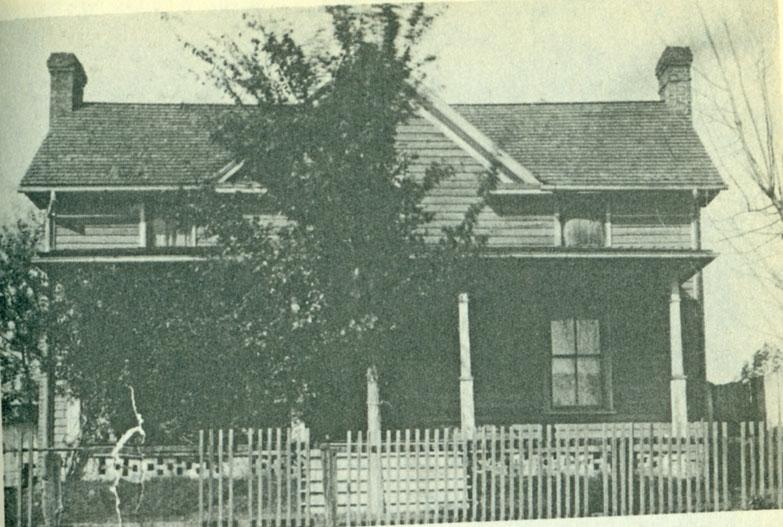
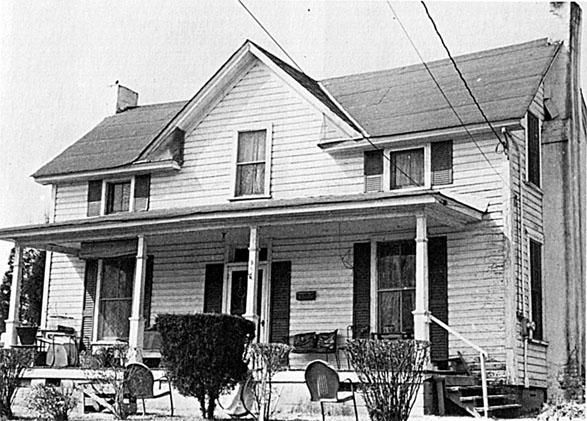

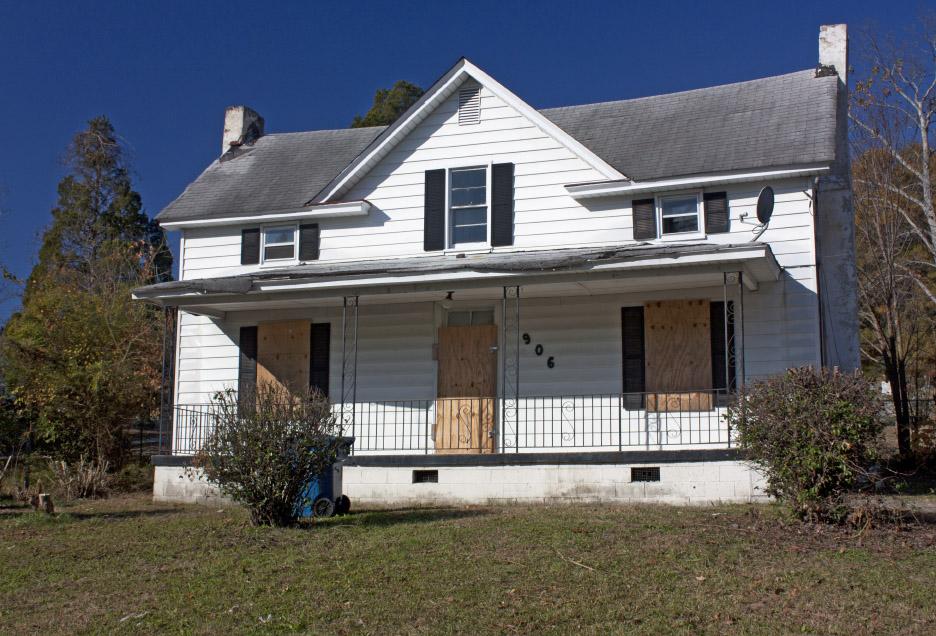
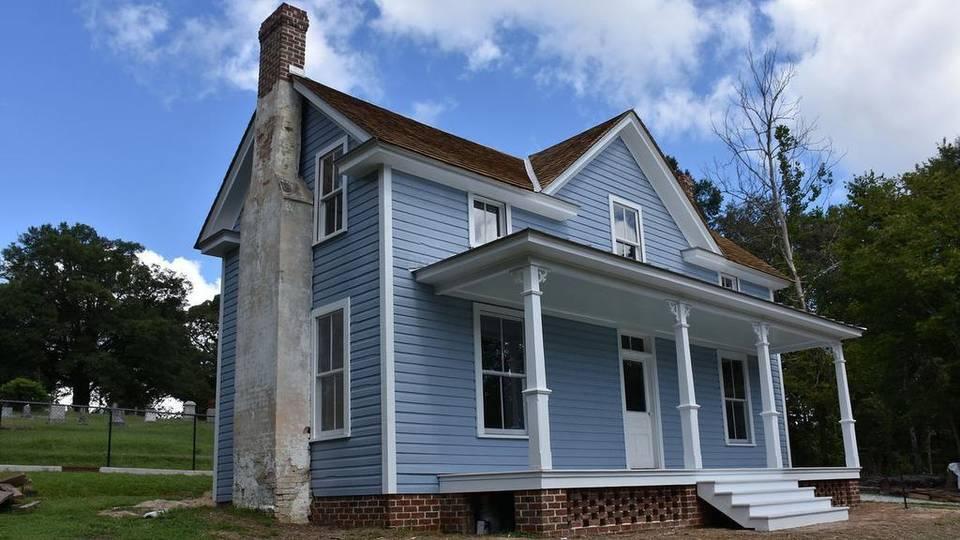
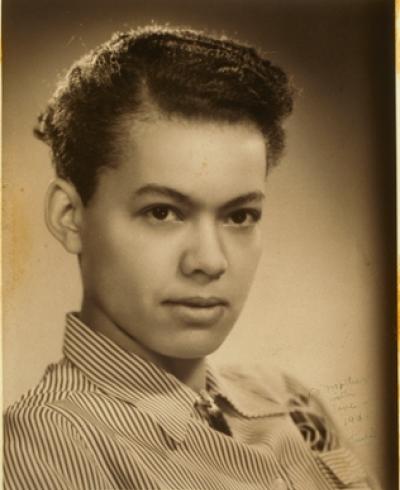
Comments
Submitted by Michael (not verified) on Mon, 12/18/2006 - 4:27pm
I beleive the laundry facility is still in use, but is now run by a contractor. But I'm not sure about that... (I can't remember the name of the contractor, but it was a big fuss when they took over, based on their pretty strident anti-union activities.)
Submitted by superchunker (not verified) on Mon, 12/18/2006 - 11:46pm
Thanks for doing a piece on this part of the neighborhood. I live on Gattis St and always wondered what was on this side of the street.
This blog is very entertaining and you have the same views of suburbanism as I do. Keep it coming.
Oh, and the old photo of the Co-Op/Muslim Center/Cab Co. was good too.
Submitted by Sven (not verified) on Tue, 12/19/2006 - 12:24am
Michael - I believe that it is no longer in use, but they could have started using it again.
Superchunker - thanks for checking out the blog, and I appreciate the positive feedback.
GK
Submitted by Christian (not verified) on Wed, 2/20/2008 - 4:36pm
It does indeed appear that the laundry facility has been abandoned. I read on Duke's website that the facility was sold to the Angelica Corporation in 2004. The article is available on the March 22 issue of "Inside Duke University Medical Center" and can be found at: (http://inside.duke.edu/article.php)
Submitted by David N. (not verified) on Fri, 4/10/2009 - 7:49pm
A closer reading of the article suggests it was the new facility (the one that replaced the Gattis facility) that was sold to Angelica Corp.
There are still Duke University signs up at the old facility, and I'm pleased that Duke continues to maintain the grounds and building. It could so easily deteriorate into a neighborhood eyesore.
Submitted by Dwight Wilson (not verified) on Thu, 1/12/2012 - 11:39pm
I am a descendant of Robert and Sadie Fitzgerald. I am trying to contact my family in NC. My father was the son of Allen J. Wilson and Sadie Wilson.
Add new comment
Log in or register to post comments.